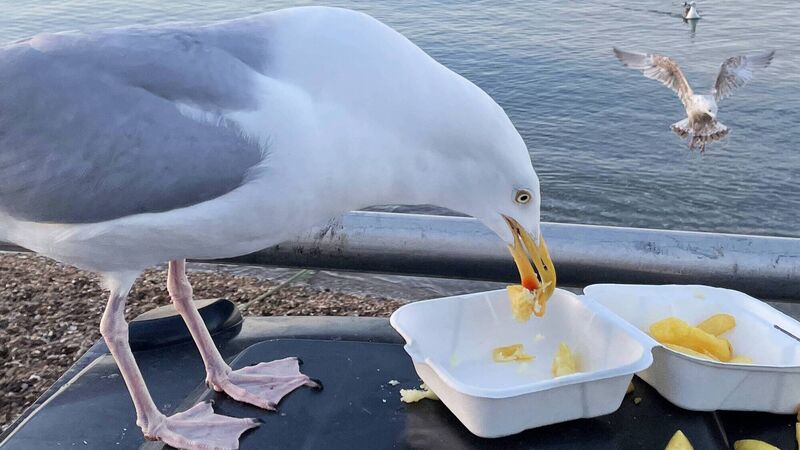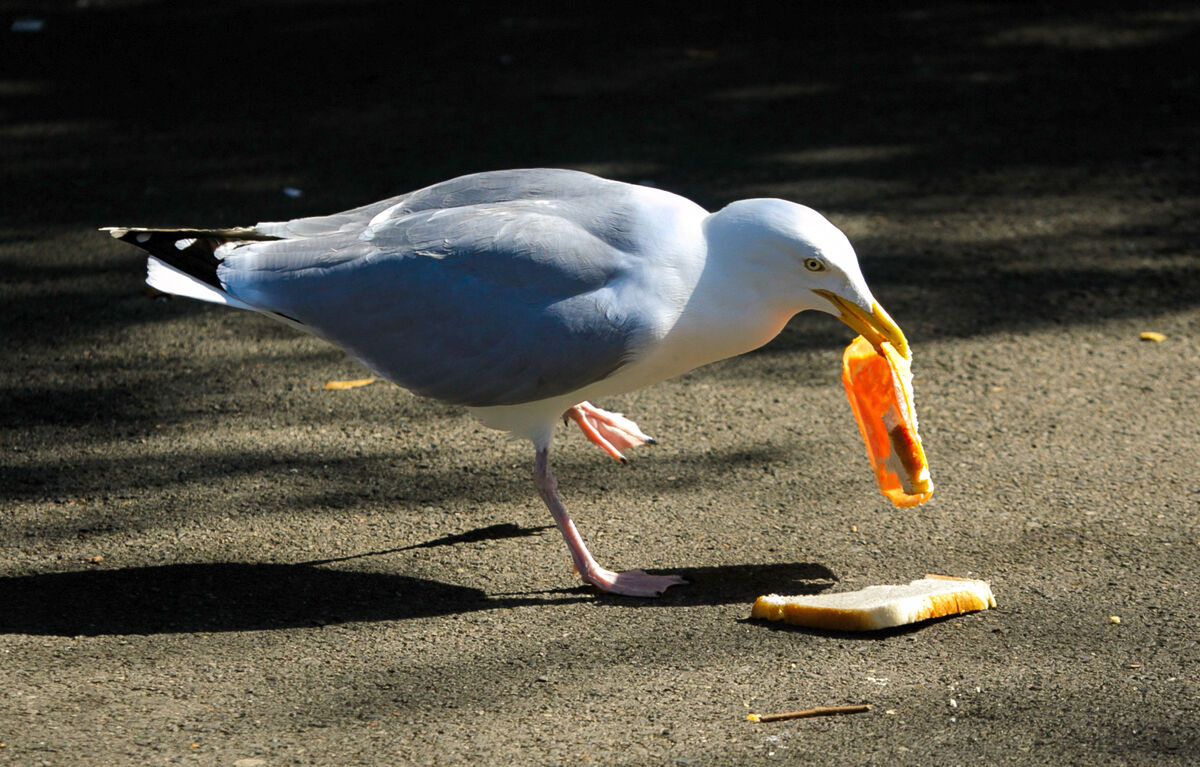Why seagulls steal your chips — and some tips on how to try save your al-fresco snacks

Michelle McKeown: "As coastal nesting grounds have been disturbed or lost to development, gulls have found new real estate in towns. Rooftops and chimneys make great cliff substitutes. Cities offer safety from predators and, more importantly, reliable food sources. Between bins, takeaways, litter, and open-air diners, the average town is a gull’s idea of a buffet."
You’ve barely unwrapped your seaside chips when — whoosh — a blur of wings, a sharp beak, and a war cry like a kettle boiling over pierces the air. Your lunch is gone. A seagull, unapologetic and proud, flaps away victoriously. You, meanwhile, are left clutching vinegar-soaked paper and existential despair.
Why do seagulls steal our food? Are they simply feathered fiends with no moral compass? Or is there more to this coastal crimewave?
Let’s start with the basics. Not all gulls are created equal. The main culprit behind chip theft in Ireland is the herring gull (Larus argentatus), though the lesser black-backed gull and great black-backed gull (imagine a seagull with gym membership) are also suspects.
this is how our day’s going how bout u guys#BenWinkmanRules #SaveLockwoodandCo pic.twitter.com/gzYgL6Wrtq
— gabriela & co (@onebignxthing) March 3, 2025
Gulls are naturally opportunistic feeders; they are omnivores with a strong side hustle in scavenging. In the wild, they’d eat fish, insects, eggs, or even other birds if the mood struck. But over time, many have moved from remote cliffside colonies into towns, cities, and tourist hotspots, becoming urban-adapted snack snatchers.
Why go fishing when you can get a free panini off an unsuspecting pedestrian?
The story of the food-stealing gull is really a tale of environmental change... both theirs and ours. As coastal nesting grounds have been disturbed or lost to development, gulls have found new real estate in towns. Rooftops and chimneys make great cliff substitutes. Cities offer safety from predators and, more importantly, reliable food sources. Between bins, takeaways, litter, and open-air diners, the average town is a gull’s idea of a buffet.
And then, of course, there’s us.
We humans have made it far too easy. We leave food unattended. We feed gulls for a laugh (please stop doing this). And when they swoop down, we panic like startled toddlers at a birthday party.
Gulls are clever. They’ve learned that people are soft targets, that we drop food when startled, and that the golden rule of theft is simple, fortune favours the bold.
Researchers at the University of Exeter have discovered that gulls are not only bold but calculating. In one study, g ulls were more likely to steal a food item that a human had just handled, suggesting they associate our interest with high-quality snacks. They’ve essentially evolved into beady-eyed behavioural psychologists.
However, more recent research (again from the University of Exeter) suggests that they still prefer seafood over an urban diet.
Now, here’s where it gets interesting. You might feel like gulls are taking over the planet, one sandwich at a time, but in truth, many gull species are in decline.
The herring gull, despite its street cred, is actually on the Red List of Birds of Conservation Concern in Ireland and Britain.
Since the 1970s, numbers have plummeted due to overfishing (their wild diet), egg collection, pollution, and changes in waste management (cleaner landfills mean fewer easy meals).
As natural populations shrink, gulls are becoming more visible in towns, giving the illusion of a boom. In Ireland, the herring gull population dropped by more than 90% in some areas between the 1960s and 1990s. Recent surveys suggest some stabilisation, but coastal colonies remain far below historic numbers.
It’s easy to demonise seagulls. But beneath the screeches and snack attacks lies a bird doing what evolution trained it to do — survive. With cleverness, adaptability, and an attitude problem, gulls have made the best of a human-altered world. They are, after all, just reacting to environmental cues. If food is scarce in the sea and plentiful in your hands, the path is obvious.
They’re not villains, they’re just fast learners with excellent aerial agility and a fondness for greasy carbs.

Of course, there are ways to protect your lunch if you don’t feel like donating it to the avian underworld:
- Avoid eating in open spaces in known gull hotspots.
- If you must dine al fresco, be alert. Gulls are patient opportunists.
- One study even suggests that staring at seagulls could save your chips!
So, keep your food close, your eyes open, and your reflexes sharp. And whatever you do, don’t feed them, no matter how charmingly they squawk or how judgmental their stare becomes. Feeding gulls not only encourages bad behaviour, but it also increases the likelihood of aggression.
The next time a gull tries to lift your lunch, remember, they’re not evil. They’re feathered survivors navigating a changing world, one chip at a time. They're smarter than we think, hungrier than we realise, and more misunderstood than a teenager in a hoodie. So, if you must dine al fresco, hold your sandwich tight, stare that gull down, and whisper: Not today.
- Dr Michelle McKeown is an environmental geographer and lecturer at University College Cork. Her research spans climate change impacts, carbon cycling, and ecosystem integrity, with a strong focus on both modern and palaeo-environmental systems in mid-latitude and tropical regions. She works on interdisciplinary projects to understand long-term climate dynamics and freshwater ecosystem responses across time.








